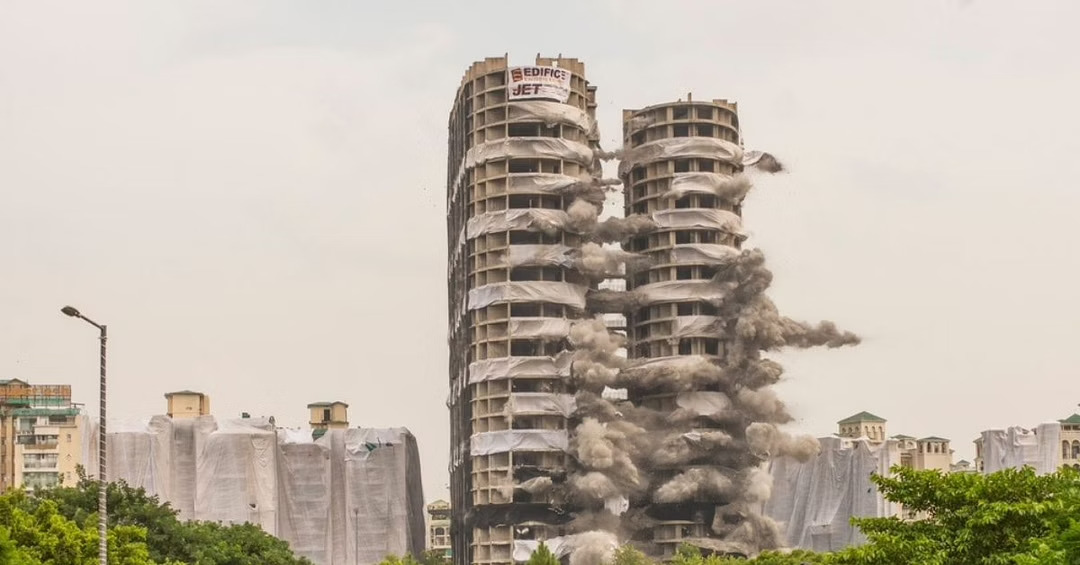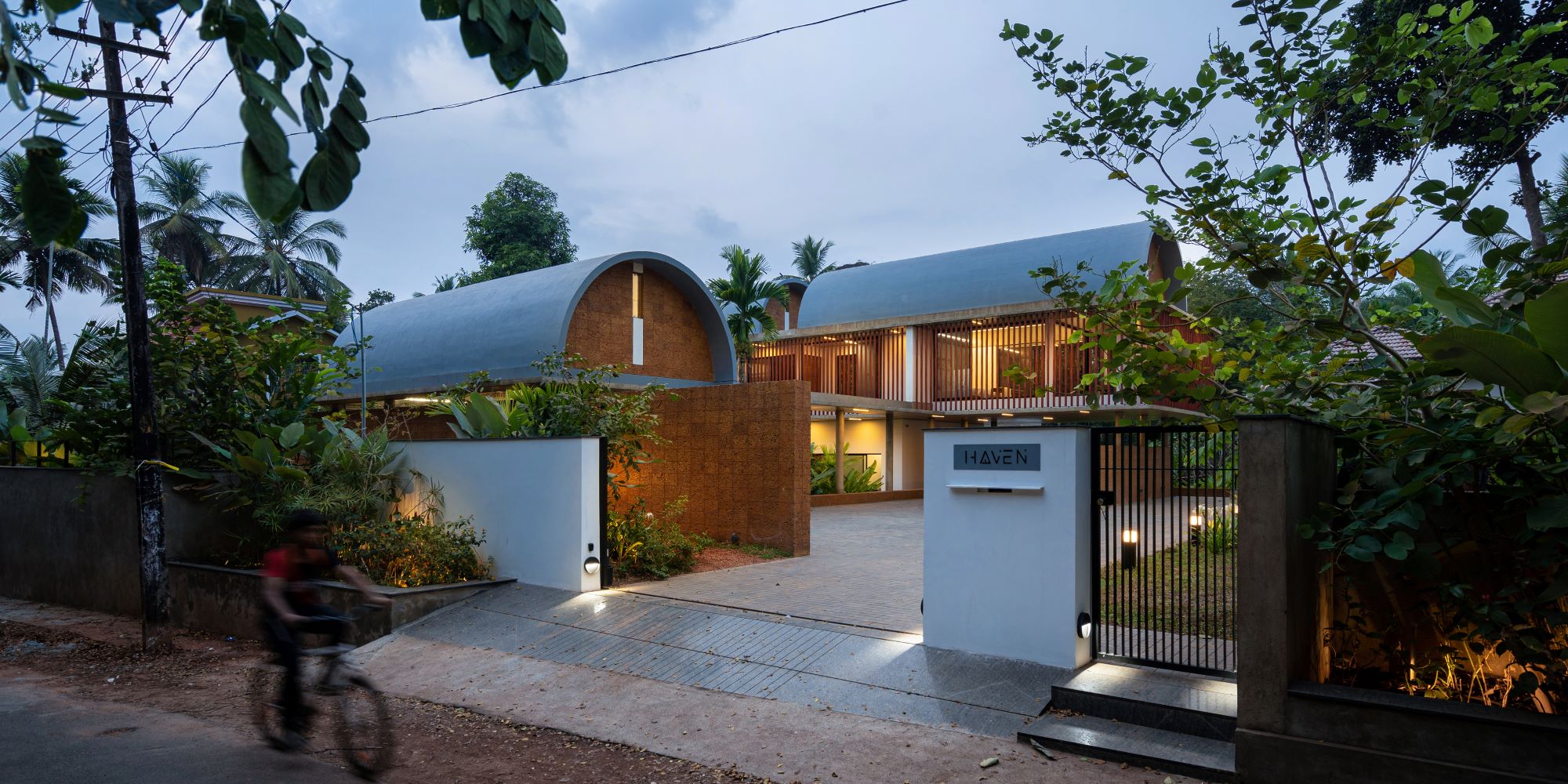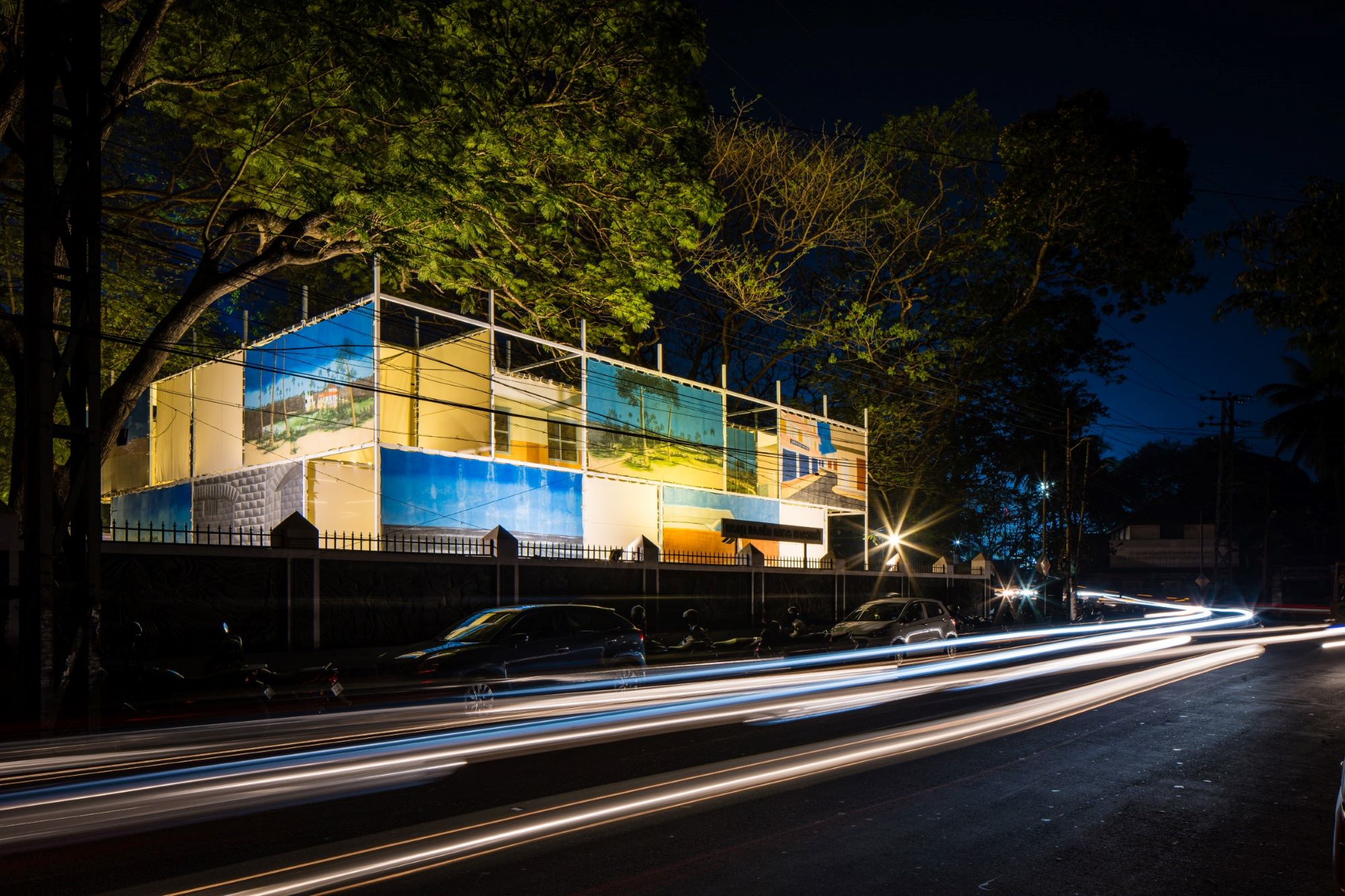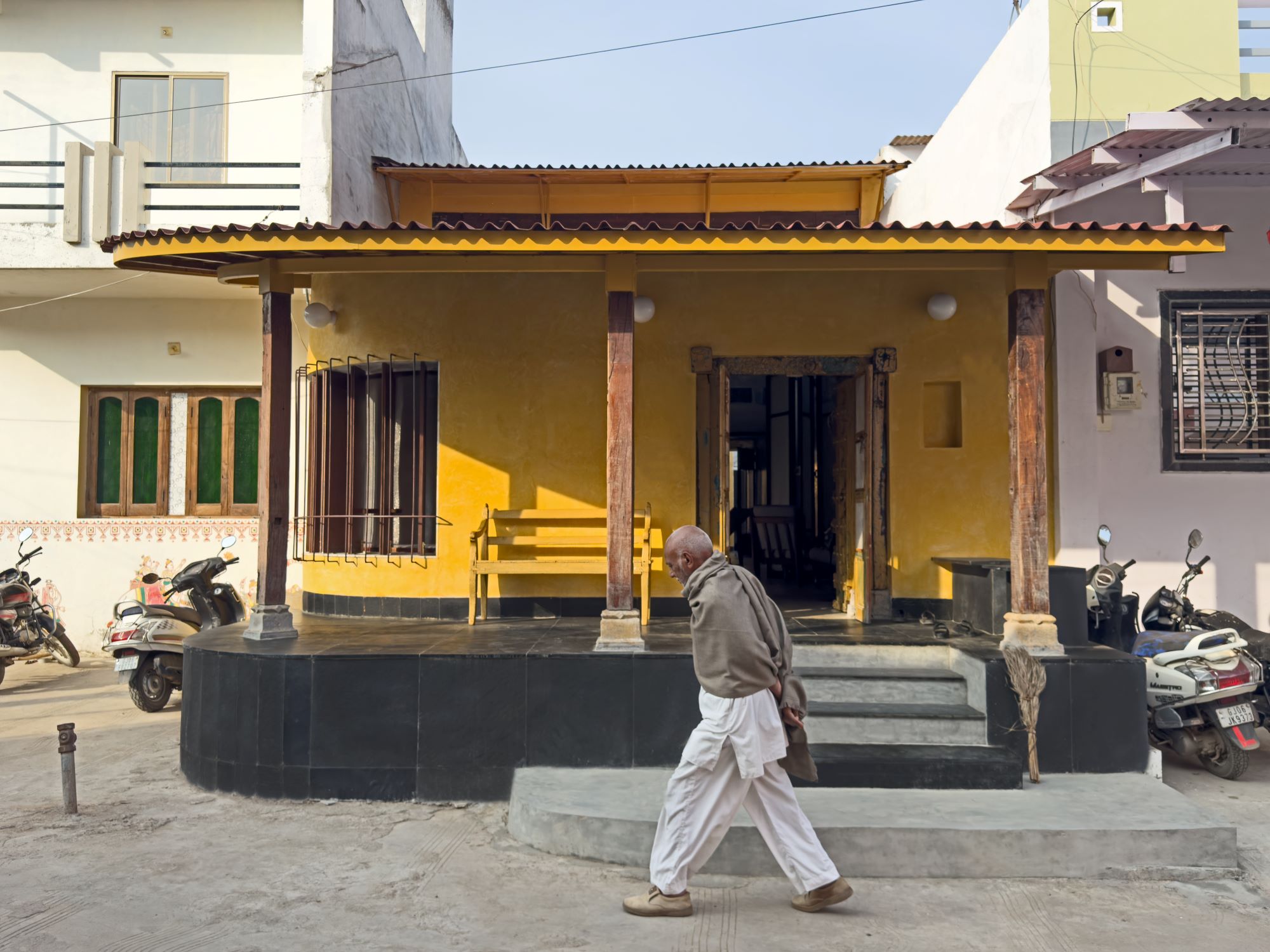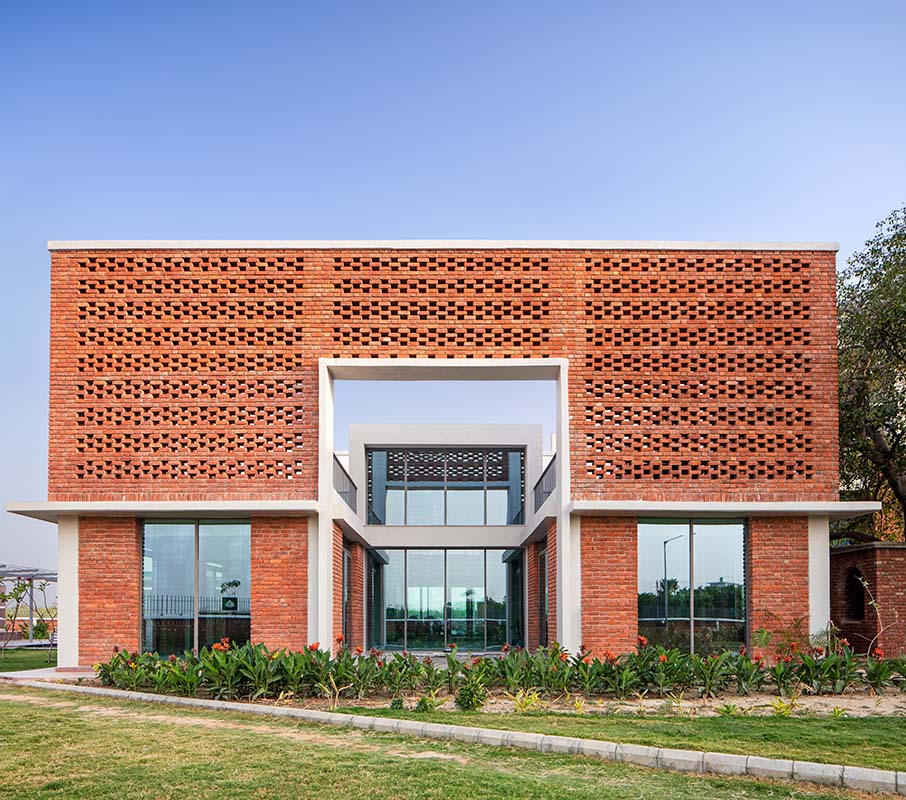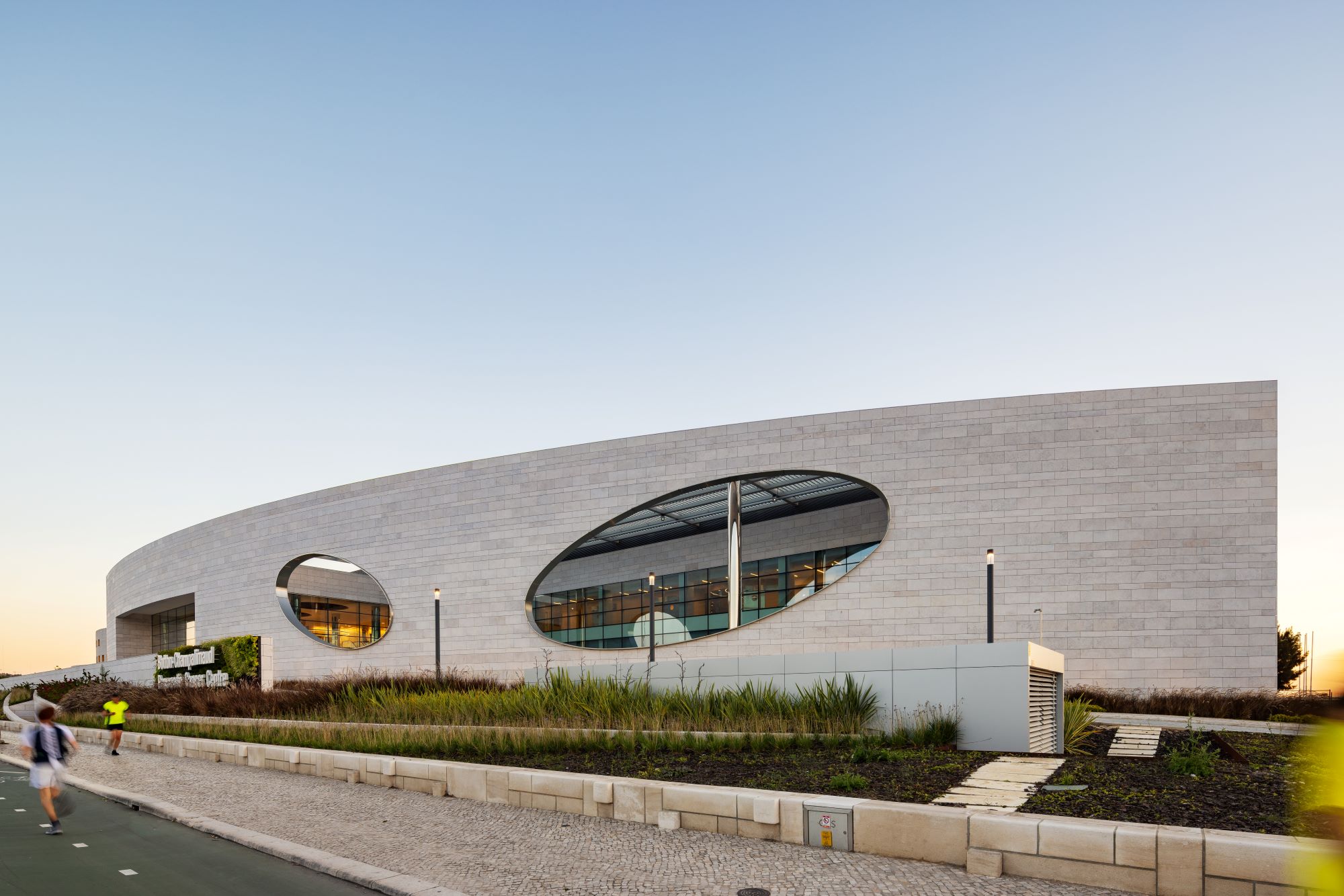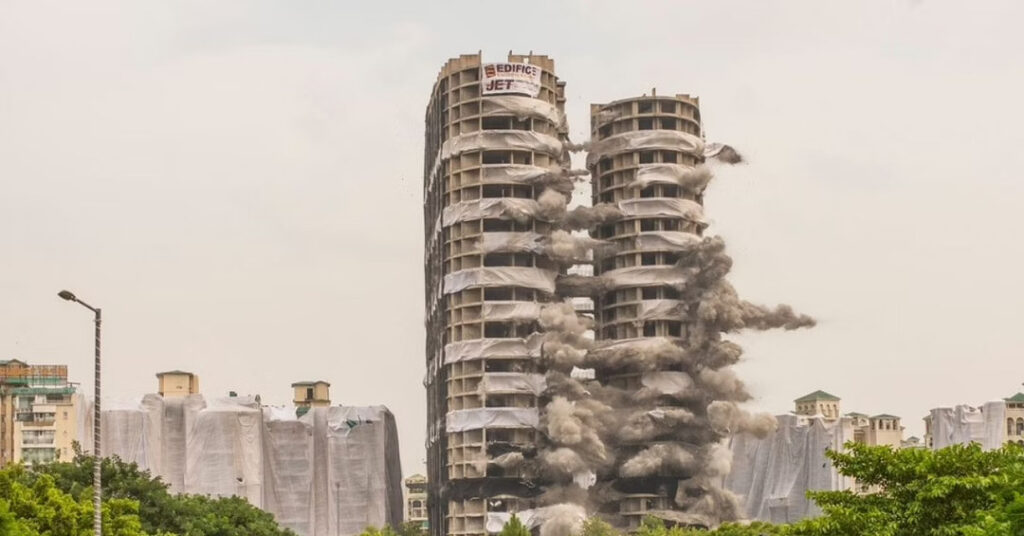
A few days back, I passed by the infamous, now non-existent, taller than Qutub Minar (something most publications have not failed to point out) Noida twin towers. To form a basis, Qutub Minar stands about 73 m high, while the two towers were 97 m and 103 m, respectively. The height was a contributing factor, but what made the buildings stand out this time was the white cloth covering them, representing, quite literally, a shroud, days before the structures got razed to the ground.
On 28 August 2022, a decade after the residents of Emerald Court in Noida first approached the Allahabad High Court, the twin towers Apex and Ceyane were demolished in a controlled blast involving the use of nearly 3,700 kg of explosives. While this was a legal issue, literally and metaphorically encroaching on the rights of the home buyers, my formal training as an architect couldn’t ‘not’ notice the impact demolishing at such a large scale was about to have on its context. We could call this a debate between the legal rights of hundreds of residents and the address of an issue from a social point of view, where evidently the former won, and how! As I saw the structures turn to debris in a marvellous engineering application of the waterfall implosion technique, a term I admit I wouldn’t have known if it weren’t for this case, I wondered what could have been achieved and avoided at the financial (it reportedly cost Supertech 20 crores to carry out this implosion alone), environmental and public health fronts if we were to take the alternate route.
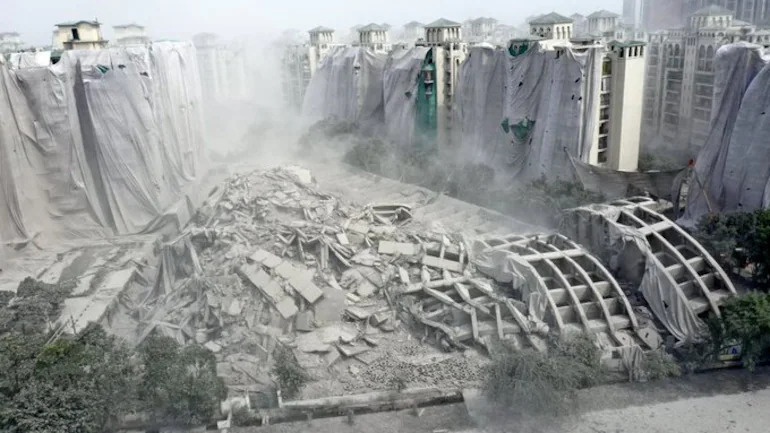
Where stood the towers, now lies 80,000 tonnes or ‘three months’ of debris. To put this into perspective, this amounts to nearly 23 days of C & D waste the entire city of Delhi produced in 2021[1]. People residing in the vicinity are expected to be looking at several weeks of health-related concerns ranging from cold and allergy to asthma. A sharp increase in the pollution level is expected- the Maradu flats demolition in Kerala in 2020 led to 75,000 tonnes of debris and a five-time increment in the local pollution level.
In such widely promoted discourses, there is always a section of people reprimanding the decree and embracing the hypothetical alternative. And here, I side with them. These environmental and health-related consequences could have been avoided. Better consequences could have been achieved.
Penalising the wrongdoer, compensating the wronged, and approaching the subject from the social, environmental and empathetic levels- if the dealing could have involved less destruction and more embracement of adaptability, the infamous project might have pioneered a new attitude instead.
As a perpetually curious person, I often engage with the destitute and homeless. As an occasional borderline privacy invader, I have often overheard (sometimes on purpose) groups of children having learning sessions on the steps of Delhi metro stations. Living close to the most revered hospital in India, the All India Institute of Medical Sciences, I have seen subways cramped with the sick and the vagrant. The covid waves devastated our country, and much like the majority of our privileged citizens, I grappled for covid beds and aggressively shared information with those who couldn’t. Having experienced and witnessed these moments in my daily life, the fall of the 32 and 29 storeys high towers seemed a loss extending beyond just flouted building norms. In these towers, I could see a shelter for the homeless, a school for the illiterate, a caring facility for the sick and a dozen more uses- uses for two buildings that were higher than the Qutub Minar (we keep pointing this out but do we realise what this would have meant). These structures were more than their height! They were potential first-hand solutions catering to several issues the country has been facing. It seems radical, baffling even, to engage two high towers for public welfare amid secure, gated societies. And indeed it is! We are not there yet, and probably wouldn’t be for a long time. So, I turned to the modern concepts of sustainability and climate change- domains that require our immediate attention but have a more glitzy appeal against serving the underserved.
Noida, similar to the rest of the NCR region, is observing rapid infrastructural growth and development. The fringes of Delhi, in particular, are continually exploited by the builders providing more spacious properties at a considerably lower price than that of the Capital. Last year saw the settling of over a decade-long legal dispute between the GNIDA and the farmers of Abadi land in Greater Noida, my place of destination when I crossed the white-clothed structures, a mere 30-minute drive from the Twin Towers site. The towers took me back to this dispute that first took place nearly 15 years ago. Looking at the structures, I could see two buildings introducing the region which is steadily losing its green spaces, to the concept of Vertical Farming. In stark contrast to accentuating the pollution levels and acting like an environmental hazard, the buildings could have catered to the opposite.
A few decades back, demolishing might have seemed more reasonable. But with growing climate change concerns and the fact that the region lies at a stone’s throw distance from the most polluted capital city in the world, a purposefully induced highly increased pollution level does not sound like a step forward. The structures could have curbed pollution levels by being converted to smog towers instead.
Weighing the pros and cons of these two situations made me observe that perhaps demolishing was just the easier option. It is less demanding to gain support and trust by compensating and following a recently tried and tested route. It requires more effort to unlearn, educate, advocate and develop the social sensitivity required to embrace the second route. I am aware we are not there yet. It is easier to write and comment than to turn the road less travelled into reality. Compromising our quality of life for someone else folly seems too idealistic for our current society, especially when consumer money is at stake.
Irrespective of what could have been, the building now stands (ironically) razed. A part of me is glad that the builders did not get away with such illegal construction and hopes that this becomes the last illegally constructed structure India sees on this large a scale. This bold, heavily publicised judgement could bring to light the role of flouted rules and stakeholders’ contribution to bring us to a point where implosion seemed the best way out. Now that we are already here and still far from retrofitting and upcycling buildings, perhaps recycling the demolition waste could be a more achievable reality.
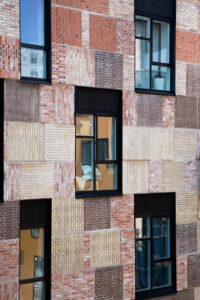
References
Image Source
[1] via: Mani, Sowmya, Noida’s Twin Towers: How A Group of Senior Citizens Led to India’s Biggest Demolition, the better india
[2] via: How sky-high Supertech Twin Towers hit rock bottom, India Today

